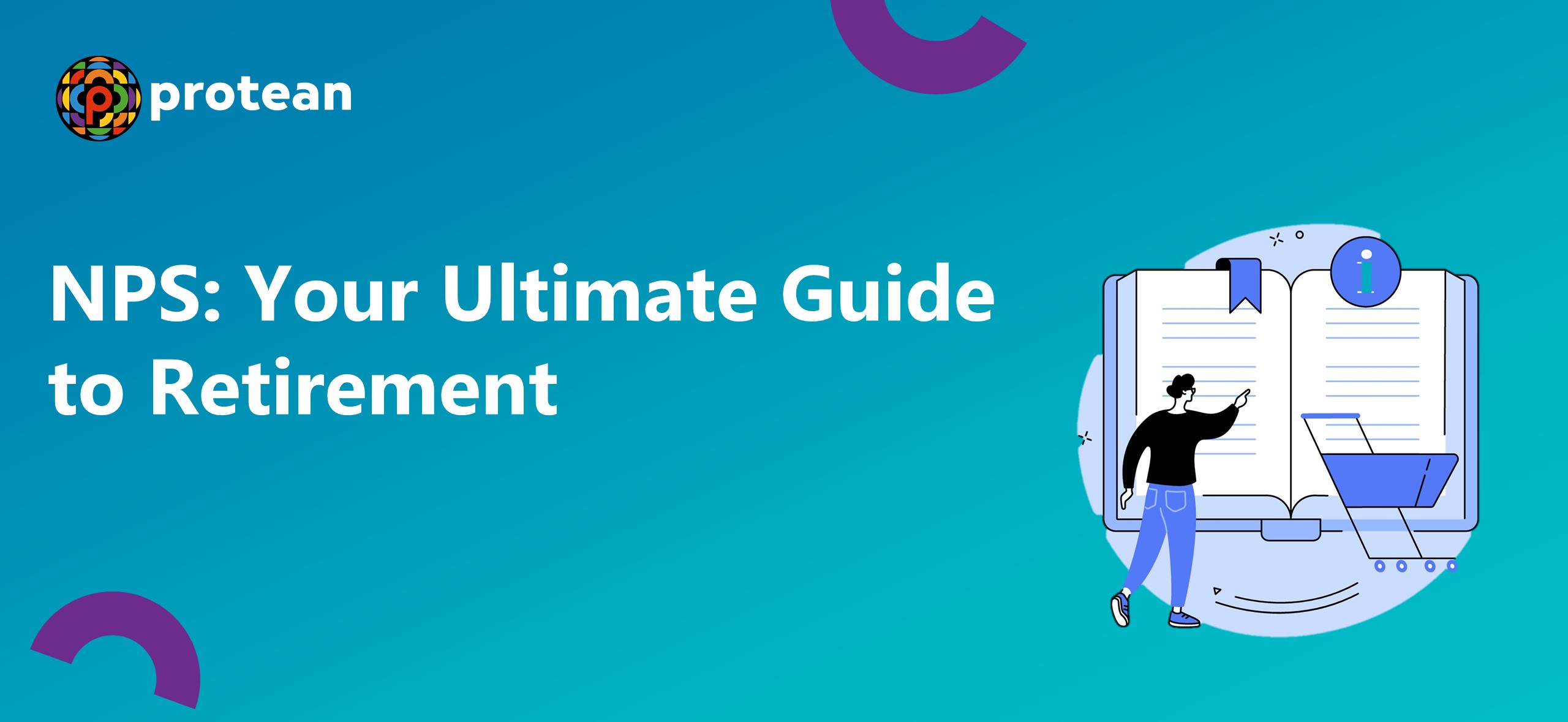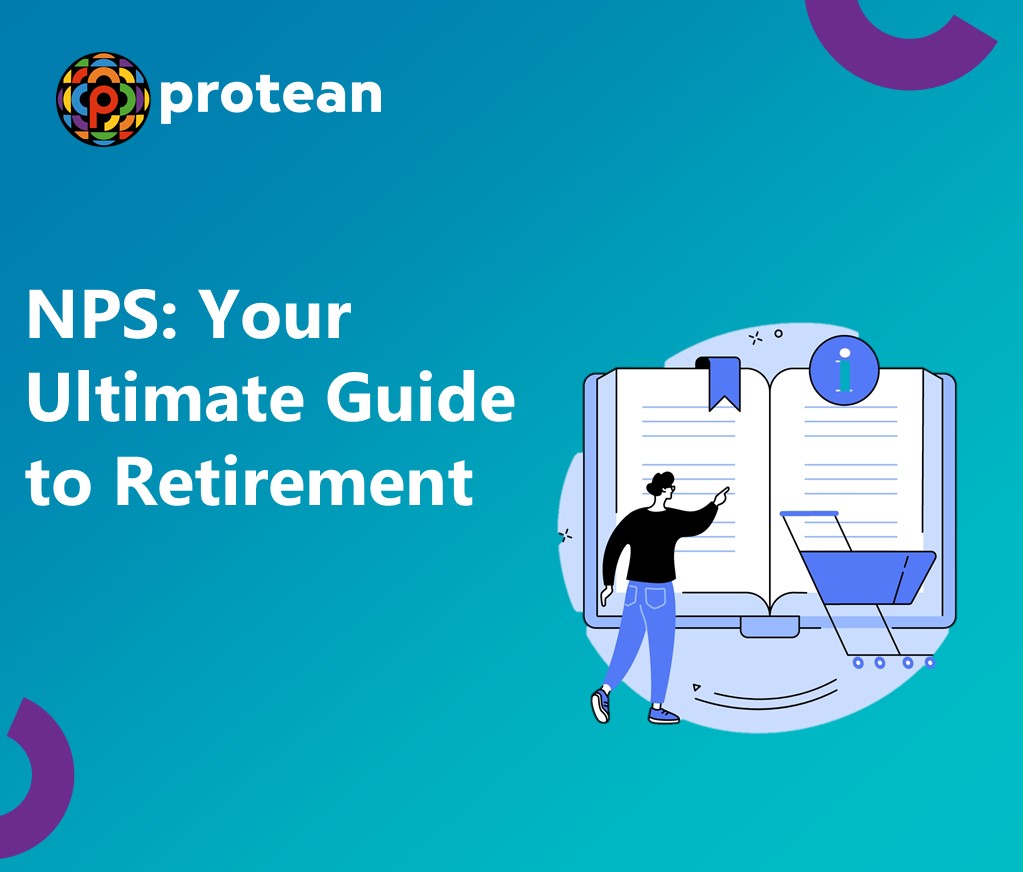After the COVID-19 pandemic, many people realised the importance of saving money while they were still in their peak productivity years. As a result, statistics showed an abrupt rise in participants in programs like the National Pension Scheme (NPS), Public Provident Fund (PPF), Equity Linked Saving Scheme (ELSS), and so on.
In this blog, you will learn mainly about the National Pension Scheme as we will discuss how NPS works. Also, by the end of this guide, you will get a hang of how you can utilise this tool for long-term wealth creation in addition to saving tax.
How Does NPS Work?
The National Pension Scheme or NPS gives you the freedom to decide where you want to contribute to save for your retirement. Through this scheme, you can invest in various classes throughout your employment period.
Now, NPS accounts are of two types: Tier-1 and Tier-2. If you open a Tier-1 account you must contribute at least Rs. 500 every year. Contrarily, Tier-2 accounts can be held voluntarily with a minimum annual investment of Rs. 1000.
Ideally, the subscribers withdraw close to 60% of the maturity amount and put it to some good use as they reach 60 years of age. The remaining 40% or more may be used to purchase an annuity plan. This plan ensures that you keep receiving regular monthly income in the form of a pension for an agreed-upon number of years.
At present, the interest rate of an NPS account ranges between 9-12%. As the contributions are distributed among 4 different asset classes (the ratio of which is either picked by you or the fund manager), there’s no fixed percentage of returns in NPS.
Features of the National Pension Scheme
Here are some highlights that you need to know about before registering your NPS account:
- The Tier-1 account type is compulsory for NPS subscribers. It attracts tax benefits of up to Rs. 2 Lakhs every year as per Section 80C and Section 80CCD of the Income Tax Act.
- The Tier-2 account is for investment purposes and can be opened voluntarily. It does not offer any tax benefits.
- You can choose among any ten pension fund managers who provide NPS schemes in India. Irrespective of the PFM you choose, your account will be accessible from any part of India.
- There’s complete freedom regarding when you want to invest in your account. However, at least one contribution has to be there in a fiscal year to keep the account active.
- You can withdraw the whole maturity amount on reaching 60 years in case the corpus is less than Rs. 5 Lakhs.
For more information on how NPS works, you can click here.
NPS Eligibility for Different Age Groups
Any Indian citizen (except those working in the armed forces) may opt for an NPS account. However, at the time of account creation, they must fulfil these criteria:
- Their age must be between 18 and 70 years while they are applying online through e-NPS or offline by visiting the POP or POP-SP.
- Also, all the listed documents have to be submitted. Non-compliance with the Subscriber Registration Form (SRF) will lead to application cancellation.
Please note that the National Pension Scheme is designed for systematic retirement planning and has to be maintained individually. No one can apply on another person’s behalf.
Why Should You Prefer NPS for Retirement Planning?
Here are the top 5 reasons to consider the National Pension Scheme as a crucial component for saving your retirement corpus:
- Tax Advantages
The Tier-1 NPS account extends tax benefits of up to Rs. 1.5 Lakhs as per Section 80C of the IT Act. Additionally, you can claim a surplus income tax deduction of Rs. 50,000 under Section 80CCD.
- Control on Investments
With an NPS account, you get to decide how much of your regular contributions should go towards equities, government securities, corporate bonds, and alternative investment funds. It allows an individual to secure their financial independence while simultaneously managing their risk appetite.
- Centrally Regulated
The NPS scheme is backed by the Pension Fund Regulatory and Development Authority (PFRDA). So, your interests are taken well care of by the Central Government of India.
- Low-cost Plan
Fund management charges are lowest ranging between 0.03-0.09%. So, you can expect a significant amount of your contribution to go towards wealth creation.
- Flexibility
Finally, withdrawal flexibility and account portability are two key aspects that make the NPS scheme very attractive. The top pension fund managers allow you to make partial withdrawals at times of emergency like availing a medical treatment, paying tuition fees, funding home purchases, etc.
What are the Various NPS Withdrawal Regulations?
These are the new withdrawal limits for Tier-1 and Tier-2 NPS accounts:
- For a tier-1 account, you can withdraw up to 25% of the contributions anytime after maintaining the account for 3 years.
- Tier-2 accounts do not have a lock-in period.
- At the time of maturity, you can choose to buy an annuity plan with at least 40% of the corpus accumulated and prefer withdrawing the rest 60%. You can opt for this solution once you reach 60 years of age. Also, you can extend the lump sum withdrawal feature until you become 70 years old.
Here are some specific withdrawal regulations for subscribers from different sectors:
1. NPS Rules for Individuals Working in the Corporate Sector
- The person must invest at least 40% of his corpus in purchasing an annuity plan. Then they can either delay the lump sum withdrawal of the balance for another 10 years or simply withdraw the remaining amount.
- In case the corpus is less than or equal to Rs. 5 Lakhs, the beneficiary can request to withdraw the whole amount.
2. NPS Rules for Government Employees
- The subscription parameters to an annuity plan post-retirement remain the same. However, if the employee is opting for voluntary retirement then 80% of their contributions will go towards annuity.
- If the corpus is less than Rs. 2.5 Lakhs at the time of retirement, the beneficiary will be allowed to redeem the full amount.
Generally, several queries arise on how NPS works with respect to annuity plan subscriptions. Let us discuss the same in the upcoming section.
What are the NPS Annuity Options You May Opt For?
While evaluating the different annuity plans you will notice varying features all of which impact the payouts that you are entitled to receive for a decided tenure. For instance, there are inflation-linked annuity plans that provide protection against rising costs.
On the other hand, there are life annuity schemes where your family and spouse get a regular source of income after your unfortunate demise. Therefore, the regularity of income that you want to ensure will eventually decide the right plan for you.
Additionally, several pension fund managers allow you to select an annuity based on the desired payment frequency of premium, i.e., you have to pay either one-time or make regular premium payouts to ensure pension.
Reasons Why Many Prefer Extending NPS Beyond the Retirement Age
As per recent reports, the Government shared stats that almost 83% of NPS subscribers wish to extend their contributions towards NPS even after reaching retirement age.
The primary purpose behind it is to leverage uninterrupted compounding that keeps on building on one's savings. For this reason, most people prefer withdrawing a portion of their corpus as soon as they reach 60.
This money is reinvested somewhere or the individual prefers fulfilling some lifetime aspirations. The rest of the amount continues to grow in the person's NPS account and as a result, they get a passive source of income via an annuity plan.
NPS Advantages and Disadvantages
Every investment scheme has some unique features that make it popular among the masses. Also, there are some limitations for which investors need to distribute their earnings in a pool of instruments.
Having said that, here we have listed down the pros and cons of the National Pension Scheme to give you a better understanding of how NPS works:
Pros:
- Higher returns: As your contributions yield returns from the equity-linked market, there are ample opportunities to secure higher returns.
- Nominal investment: The NPS scheme calls for a nominal annual investment. A subscriber can successfully keep their account activated with just a Rs. 500 contribution in a single year.
- Simple documentation: The documentation process, account accessibility and maintenance parameters are very easy.
- Tax benefits: You get tax benefits of up to Rs. 2 Lakhs every year under Section 80C and Section 80CCD(1).
- Risk management: Most importantly, as a beneficiary, you are allowed to conduct complete risk management. If you choose the active-choice option while NPS account creation, you can decide how much of your contributions should go towards equity and corporate bonds. The remaining amount is channeled towards government securities to stabilize the risk-return exposure.
Cons:
- Tax is levied while purchasing an annuity plan or at the time of drawing pensions.
- Your investment towards equity instruments is restricted to 75%.
- Also, there can be some complexity when choosing the Pension Fund Manager.
Besides these pointers, many see the provision of purchasing a compulsory annuity plan as a disadvantage. Also, the annuity returns are not eligible for tax deduction.
Step-by-step Guide to Open an NPS Account
You can open an NPS Tier-1 and Tier-2 account(s) both via the website of Protean or by following the offline method. Here, you can see the online method:
Step 1: Visit the official website of Protean to register online.
Step 2: Fill in the application form to provide your phone number, Aadhaar number, PAN card details, etc.
Step 3: Complete the initial transaction and verify the account opening by entering the OTP.
Step 4: Note down the PRAN as you will need it for logging in to your NPS account in future.
For offline applications, you must follow the steps below:
Step 1: Visit the nearest Point of Presence (PoP).
Step 2: Fill out the account opening form.
Step 3: Submit the photocopies of all the documents required
Step 4: Pay the initial deposit.
The account opening process can take up to 7-10 days when you apply for NPS account creation offline.
Conclusion
NPS is a retirement scheme where pension fund managers strategically invest your contributions in exchange for a minimal fee. The program is becoming increasingly popular among all Indians, especially because the NPS has produced the highest returns compared to any other tax-saving scheme.

